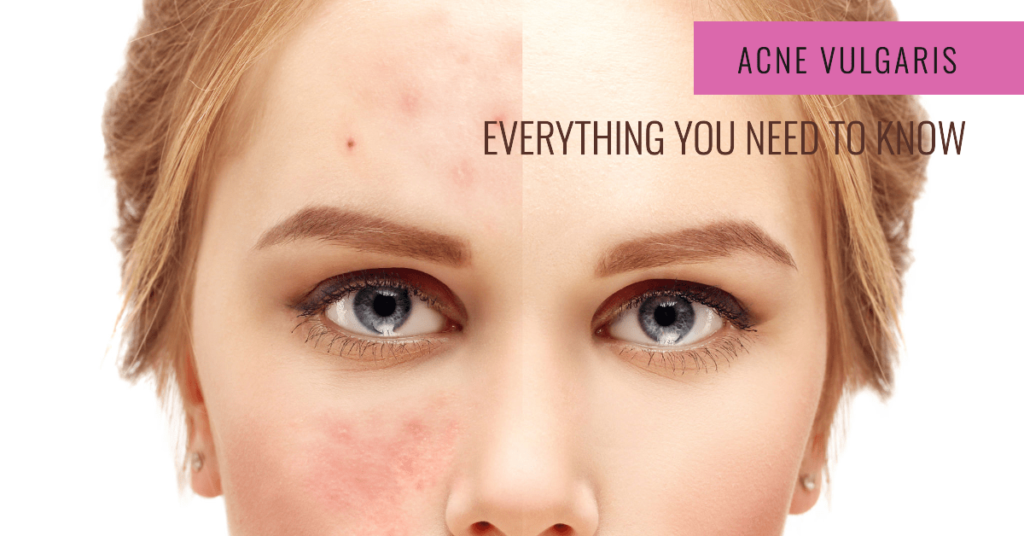Is My Stress Causing Hair Loss? Yes, chronic stress may cause hair loss apart from anxiety, indigestion and problem with sleep. Usually, stress induced hair loss is reversible once stress levels goes back to normal. There are three types of stress induced hair loss; Telogen effluvium, Trichotillomania and Alopecia areata, all of which are discussed below.
If you’ve noticed more strands in your brush or shower drain, stress might be one of the explanations behind it. But how exactly does stress lead to hair loss, and is it reversible? Let’s break down the science behind stress-induced hair loss, how each is caused and what you can do about it.
How Stress Affects Hair Growth
There are four stages of hair growth cycles:
- Anagen Phase (Active Growth): Hair grows in abundance.
- Catagen Phase (Transition): Hair stops growing, detaches from blood supply and prepares to shed.
- Telogen Phase (Resting): Hair remains in place but is inactive while new hair starts forming.
- Exogen Phase (Shedding): Old hair falls out, making way for new growth, with normal daily shedding of 50-100 strands.
Under normal conditions, hair follicles cycle through these stages smoothly. However, when the body experiences prolonged stress, hormonal changes can disrupt this cycle, pushing more hair follicles into the resting phase, leading to excessive shedding. These stages are discussed in detail here.
Instagram View @xGloe
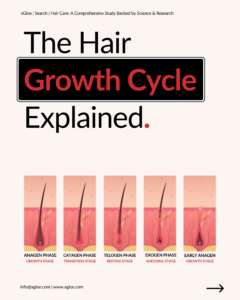
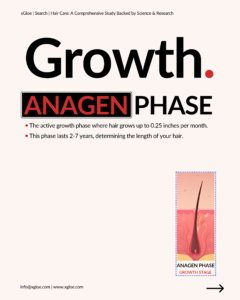
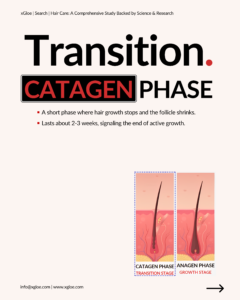
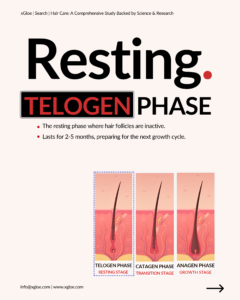
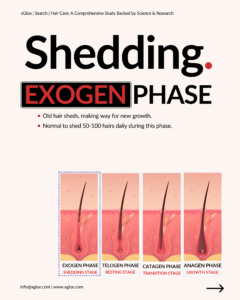
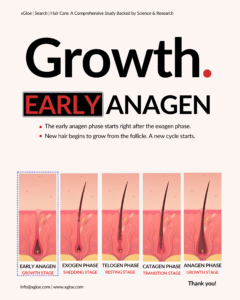
Types of Stress-Related Hair Loss
1. Telogen Effluvium (TE)
Telogen effluvium (TE) is one of the most common causes of hair loss which is characterized by excessive hair shedding due to disruptions in the hair cycle. While most of the time it is temporary, it can be distressing if not managed properly and within a few months, hair may start shedding in clumps which are often noticed while washing or combing.
How Would I Know If I’m Affected By TE?
There are primarily four tests that can be done by your physician to confirm Telogen effluvium.
- Hair Wash Test: It is done to estimate the amount of hair shedding during washing.
- Trichogram: It is done to analyze the proportion of hairs in different growth phases.
- Phototrichogram: A non-invasive digital imaging technique to track hair density and growth rate.
- Scalp Biopsy: A definitive test to distinguish telogen effluvium from other conditions like alopecia areata.
Will My Hair Ever Grow Back?
In most cases, telogen effluvium is reversible once the underlying causes are addressed. Hair typically regrows within 6-12 months, though chronic cases may take longer. Consistent care, proper nutrition, and stress management can help accelerate recovery.
2. Trichotillomania
This is a psychological condition where individuals compulsively pull out their hair, often from the scalp, eyebrows, or eyelashes. It’s a coping mechanism for stress, anxiety, or boredom. Pulling out hair from the scalp leaves patchy bald spots which can cause a lot of distress and also can affect your work, social life and since it is psychological, connected with mental health, one might go great lengths to hide this. People pull out hair because it provides a sense of relief.
Trichotillomania can either be automatic where you pull your hair while reading a book, trying to solve a problem or even watching TV unlike focused pulling of hair which you do intentionally to relieve tension when you are under pressure or when you get frustrated with a situation.
Can I Diagnose It On My Own?
Diagnosis of Trichotillomania requires the involvement of a Physician where they provide the diagnosis based on clinical interviews and observation of symptoms and start treatment as they seem fit.
If diagnosed early, behavioral therapy and stress management can help stop hair pulling and promote regrowth.
3. Alopecia Areata
In this case, the immune system mistakenly attacks hair follicles, causing sudden patchy hair loss. A significant stress level is believed to trigger or worsen this autoimmune condition. It not only affects hair on your scalp but also other affects other parts of the body. Here also, the damage to the hair follicle is not permanent.
How Dose It Happen?
As explained above, a healthy hair growth cycle comprises of multiple phases however, in people with this condition, hair follicle gets stuck in an early growth also known as Anagen phase and can not fully develop which further leads to sudden hair loss because the hair stops properly growing and falls out too soon.
Symptoms of Alopecia Areata
- Sudden and noticeable loss of hair in round or oval patches.
- Smooth, hairless patches on the scalp or other body areas.
- Occasional tingling or discomfort in affected areas.
- Regrowth of hair, which may be white or lighter than the original color.
- Nail changes, such as pitting or ridging.
Can It Be Reversed?
Yes, Alopecia Areata can be managed and even reversed, and in many cases. However, the response to treatment varies from person to person. Some people experience full regrowth, while others may not. Since it can not be self diagnosed nor it’s recommended, your physician may start your treatment with either one of the following or a blend of all, depending on individual cases.
Treatment Options:
- Corticosteroids: Reduce immune system activity to stop hair follicle attacks.
- Minoxidil (Rogaine) – It promotes hair regrowth but does not prevent new hair loss.
- JAK Inhibitors – They Targets the immune pathways involved in hair follicle attack.
- DPCP Immunotherapy – It Triggers a mild allergic reaction to divert the immune system from attacking hair follicles.
- Lifestyle Changes (Stress Management & Nutrition) – Can support hair health and reduce flare-ups.
Conclusion:
Stress-induced hair loss can occur in different forms, including Telogen Effluvium, Trichotillomania, and Alopecia Areata. While each condition has its own causes and effects, most cases are manageable and reversible with early diagnosis, proper treatment, and lifestyle adjustments. Addressing stress, maintaining a healthy routine, and seeking medical guidance can significantly improve hair regrowth and overall well-being.



